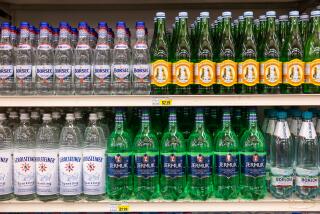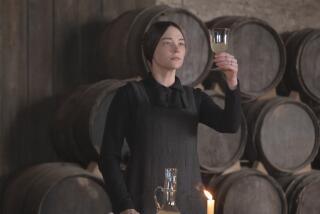Californiaâs Merry Edwards Tapped for Position at Domaine Laurier
Merry Edwards, one of Californiaâs most innovative wine makers, has been appointed wine maker at Domaine Laurier.
The announcement was made by Donald Bade, president of Vintech Inc. of Santa Rosa, the company that acquired Domaine Laurier from owner Barbara Shilo on behalf of a limited partnership formed by Vintech.
Edwards, who made some of the stateâs most acclaimed wines at Mount Eden Vineyards in the Santa Cruz Mountains between 1974 and 1977, also worked for seven years as wine maker for Matanzas Creek Winery.
Since 1984 she has made wine for her own brand, the Merry Vintners. Domaine Laurier is located in cool Forestville in the Russian River Valley, not far from Edwardsâ home and winery. Edwards will continue to make the Merry Vintnersâ wines.
Ed Jonna, a wine merchant from Detroit, stole the show at the ninth Sonoma County Wine Auction and Showcase when he was called up to auction off a special lot of wine donated by Matanzas Creek Winery.
Auctioneer Michael Davis of Christieâs in London asked Jonna to the podium because the lot up for bids was unique in that winery owners Bill and Sandra MacIver agreed to part with up to five cases of rare library wines from the Matanzas Creek cellar, including bottles of double-magnum size.
The auction catalogue noted, âSome restrictions apply,â but that didnât dissuade a triumvirate from bidding heavily.
The fact is that the three bidders included Jonna, the guest auctioneer.
This apparent conflict of interest didnât bother anyone in the huge tent at the Sonoma Mission Inn, however, because all three partners in this venture--Jonna, Andy Lawlor and Gino Morga--are well-known bidders at such auctions and the crowd knew they would pay whatever was necessary to get their hands on the Matanzas Creek cellar.
The partners wound up paying $2,900 for the right to invade the Matanzas Creek cellar and haul off their loot. The bid also earned the trio a luncheon with the MacIvers.
Jonna, owner of the Merchant of Vino wine shop in Detroit, was giddy with power, swinging his gavel and using the sing-song approach of a tobacco or cattle auctioneer to urge the price upward. And when bidding reached $2,200, the only bidding paddles left in the air were the three. All three paddles were held aloft by Lawlor, a Dexter, Mich., computer company president.
And because he saw three paddles, Jonna laughingly raised the bid price three times.
At $2,900, there were no other bidders. The third member of the group, Morga, is an attorney from Windsor, Ontario. All three have been top bidders at major auctions including the Napa Valley Wine Auction. (Morga was the underbidder on a lot of wine that sold for $42,000 in Napa earlier this year.)
Nearly $353,000 was raised at the auction that benefits the countyâs wine industry. Receipts from the main, live auction were $115,130, paid for 175 lots of wine. A barrel auction raised $76,700 and a silent auction raised another $11,164. Total ticket receipts were $149,970. The total exceeded last yearâs $299,000.
Proceeds go to the newly established Sonoma County Wineries Foundation that was created last November to publicize Sonoma County wines and to benefit wine interests in the county.
The highest price for a single lot of wine was $4,200, the price paid by Peter Henry, general manager of the Sonoma Mission Inn, for a unique table holding six Baccarrat decanters filled with 1986 Chateau Souverain Cabernet Sauvignon.
The second high bid, $4,050, was paid by Ronald Larson of San Francisco for a collection of Zinfandels from the cellar of the late Joseph Swan, a bottle of every Zinfandel Swan made from 1968 through 1987.
The Sonoma auction, unlike the Napa auction that induced bids in the five figures, is more for fun and friendship, and during the four days various hospitality events including a barbecue and dinners highlighted Sonoma County produce.
Dennis Fife, 43, vice president and general manager of Inglenook-Napa Valley since 1983, will leave that position next month to pursue other interests.
An announcement, to be made by Heublein Inc. is expected to say that Fifeâs duties will be assumed by Richard L. Maher, the new head of the Fine Wine Division of Heublein. There will be no replacement for Fife at Inglenook, it was learned.
Fife first joined United Vintners in 1974. He moved to Beaulieu Vineyard in 1979 before his appointment at Inglenook.
Heubleinâs Fine Wines Division is being reorganized following the acquisition by Heublein of the Christian Brothers. Under the reorganization, Tom Selfridge, president of Beaulieu Vineyard and the former head wine maker, will remain in his present role.
More and more in the last few years I have noticed that wines that have a âcorkinessâ to them are becoming a problem.
This problem comes from corks that are treated improperly during production, wine makers say, and they admit that the problem has become worse in the last few years. In wine competitions at which I have been a judge, about 2% to 3% of the wines I taste are âcorked.â This is the most common reason to reject a wine served to you in a restaurant.
Identifying a corked wine is easy--once you have had the experience of a bad bottle. In general, the smell is like a moldy, dank cellar. But until you smell the chemical that is responsible for this aroma, itâs hard to be sure that what you have is corked or merely another problem linked to the wine.
The compound that makes corks smell this way is called 2-4-6 Trichloroanisole (TCA for short), and now a publication called Wine Trader is offering little vials of 2-4-6 TCA for $2 so consumers and merchants can see what corkiness is all about.
For a sample of 2-4-6 TCA, send a check to Wine Trader, P.O. Box 7244, San Francisco 94120.
More to Read
Eat your way across L.A.
Get our weekly Tasting Notes newsletter for reviews, news and more.
You may occasionally receive promotional content from the Los Angeles Times.









